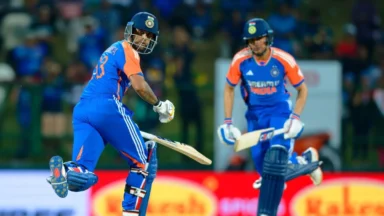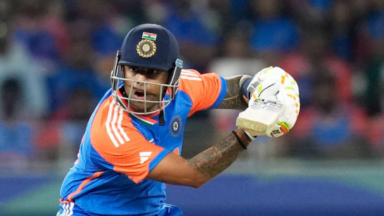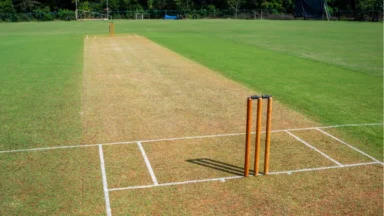Rishabh Pant’s audacious 107-meter six in the first Test against New Zealand in Bengaluru was a moment of pure spectacle. The shot, which cleared the stadium, seemed to have turned the tide in India’s favour. The southpaw was looking at his ominous best, striking the Kiwi bowlers for fun on Day 4. When he got down on his right knee to sweep Tim Southee for a monstrous six, everyone in the stadium watched the ball go sail over the Chinnaswamy Stadium’s roof.
Rishabh Pant’s huge six: A double-edged sword?
As soon as Pant hammered that blow, the match referee rushed onto the field to bring out the new ball to continue the proceedings. However, it was this change that might take Team India ultimately to the defeat. How so? Well, the ball that Pant clubbed for a maximum was 39-ball old. The hardness of that SG ball was diminished and runs were flowing left, right and centre.
Nonetheless, the ball had to be changed and the new ball brought new challenges for India. Nine balls later, Pant dragged one onto his stumps, leaving him agonizingly short of a well-deserved century. With this, came the downhill of the Indian batting order. India were 77 runs ahead till that point and eyed at least 100 more. However, as fate would have, the new ball seamed and bounced a little extra, bundling the next five wickets in a span of just 29 runs.
More on Cricket
India, having collapsed to a paltry 46 runs in their first innings, were fighting back admirably in the second. Their batters had built a solid partnership, and the team seemed to be in a strong position. Then came Pant’s monstrous six, which sent the crowd into a frenzy. It appeared as if India had seized the momentum. The Indian batting order subsequently crumbled, and New Zealand found themselves in a commanding position once more. In fact, the new ball after Pant’s six seamed twice as much than the second new ball that was taken after the 80th over.
In this case, Pant’s six, while a moment of brilliance, ultimately proved to be a double-edged sword. It not only electrified the crowd but also set in motion a series of events that led to India’s downfall. By the end of Day 4, New Zealand are ahead in the opening Test as they require 107 runs to clinch the match. It would take a miraculous effort from the Indian bowling unit to script the most remarkable of comebacks in Indian Test history.





















































































































